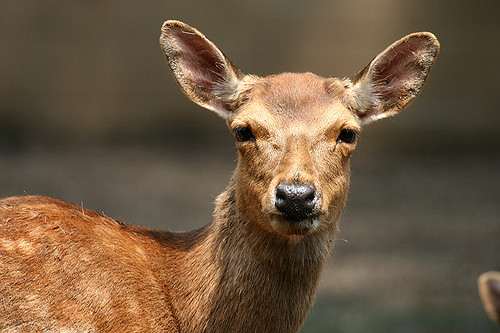
By Dan Grant/RFD Farm Week Now
WAPELLA – Dale “Rusty” Karr, a fifth-generation member of a centennial farm in central Illinois, always loved animals and raising livestock.
He previously raised cattle and was particularly fond of hunting.
But it wasn’t until after a life-threatening event occurred in 2000 that Karr made a life-changing decision that still puts a smile on his face to this day.
Karr purchased the family farm near Wapella (along the McLean/DeWitt County border) and sectioned off 10 acres with a row of pens to start a business raising one of his favorite creatures – white-tailed deer.
“I grew up with animals,” Karr said on an overcast, breezy October morning as he and his father, Dale Sr., fed the herd of around 150 to 200 deer. “This is like an outdoorsman’s dream.”

That dream almost never materialized after a nightmarish day in 2000.
Karr, who at that time worked in the construction industry with his father, was driving a 3-ton truck through a February ice storm. He was involved in a horrific accident that crushed his legs, broke an arm and a scapula and tore his liver among other life-threatening injuries.
About 90 units of blood helped save his life, but he lost a leg.
After a long recovery process, Karr learned of a Top 30 deer genetics sale in Bloomington. He spent about $50,000 at the sale and started to turn his dream of a deer farm into a reality.

Karr and his father both retired from the construction industry after the accident and focused on the new venture.
“I looked at it as an investment,” Karr said. “It started with three deer and every year I bought more. I’ve got a lot of friends in the deer farming industry. It became a family business (his mother assists by bottle-feeding the fawns).”
Karr produces shooter bucks that he sells to hunting preserves in Illinois and surrounding states, including Iowa, Missouri and Wisconsin.
He also focuses on top-end genetics that are a lucrative side of the industry as well. Top buck semen can fetch anywhere from $5,000 to $15,000 per straw.
Key attributes sought via genetics include body size and, of course, antlers.

As for the does, Karr sells those to parks or other farmers looking to start or expand deer farms. He estimates there currently are close to 400 deer farms in Illinois.
“I’ve been more successful than I ever imagined,” said Karr, who has been featured on outdoor television networks, including the Pursuit Channel.
The deer industry, while small compared to other livestock production in Illinois such as cattle and hogs, became one of the fastest growing segments of the sector in recent years, according to Karr, who serves as a board member of the Illinois Deer Farmers Association (ILDFA).
The production side of the business has many similarities to other livestock operations. Karr reduces threats from predators via electric fence around the perimeter and put a shade cloth around the fence to provide shade and reduce stress on the deer.
The Karrs feed the deer a blend of soybeans, roasted sunflower and some corn. They vaccinate the animals and operate a chronic wasting disease monitored facility that’s also brucellosis certified.
“I can ship (deer) to any open border state in the U.S.,” added Karr, who breeds the deer around November each year, about the same time as wild deer.
The above content is from Farmweeknow.com.






